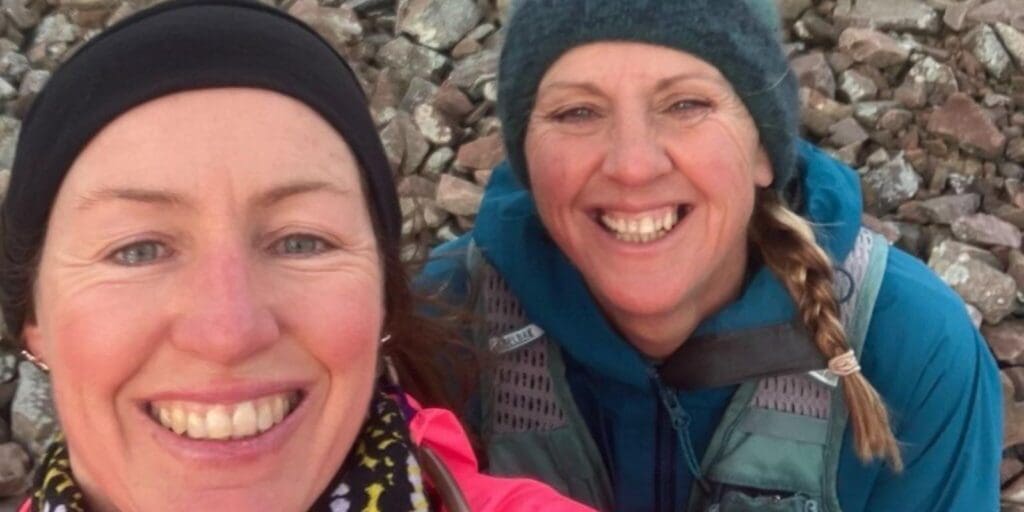Two seasoned Gower runners – Helen Nicholas, founder of Gower Unearthed, and her best friend, Sally Munro – are set to embark on a mammoth 200-mile journey from Oxford University Museum to Goat Hole Cave, Paviland, on the Gower Peninsula. This extraordinary run, beginning on October 20, aims to raise awareness of one of South Wales’ most significant archaeological treasures: the Red Lady of Paviland.
Discovered in 1823 by archaeologist William Buckland, the so-called Red Lady is, in fact, an Ice Age hunter from around 33,000 years ago. Alongside the remains, a mammoth skull was also found, linking this discovery to the great Ice Age creatures that roamed the palaeolithic landscape at this time. This burial is the earliest known ceremonial grave in Northern Europe. However, following its discovery, the skeleton and its grave goods, including shell jewellery and mysterious ivory wands, were taken to Oxford University Museum, where they remain today.
Gower Unearthed, led by heritage specialist Helen Nicholas, is part of the Paviland Futures campaign aiming to return the remains to Swansea, and is part of a broader effort to celebrate the region’s rich ancient history and prehistoric past. The campaign has already engaged with schools, public groups, and festivals, and now, alongside her friend and running partner, Sally Munro, she will embark on this symbolic journey to bring the Red Lady’s story back to life.
The 200-mile journey encompasses 20,000 feet of elevation and approximately a marathon a day, on average, for six days.
Sally Munro said:
“It is a huge undertaking and will test our resilience, endurance and navigation skills. We may need to survive inclement weather and brave boggy, windy and rocky terrain, much like that of the palaeolithic people of our past.”
The stretch from Hay will be the toughest, most challenging part of the journey, spanning the Black Mountains and Bannau Brycheiniog – summiting Pen y Fan, the highest mountain in South Wales and the jewel in the crown that is the Brecon Beacons National Park. Along this section the pair will utilise the Offa’s Dyke path, Cambrian Way and Beacons Way, as well as the Usk Valley walk and Taff trail.
Once they reach the imposing Fan Gyhirych, they will descend to Penwyllt before linking up to the ‘Sleeping Giant’ towards Ystradgynlais, and the final section of the journey to Neath Abbey and finally Swansea Museum.
Helen Nicholas, founder of Gower Unearthed, vice chair of Paviland Futures, and runner, said:
“We want this run to feel hard. As we journey through some wild, untamed landscapes, we will experience the beauty of our environment and all its visceral challenges. It’s a powerful way to connect with our past and raise awareness of the desire to bring this extraordinary relic back home and consider how we care for our heritage and the natural world.”
Helen and Sally are inviting the public to get involved in their journey. Whether by joining them on sections of the run, meeting them along the route, or simply spreading the word, the runners are calling on people to help raise awareness of this important campaign.
Helen Nicholas explained:
“We would love for people to meet us along the way, or even join us for parts of the route. This run isn’t just about us – it’s about coming together as a community to celebrate and honour this incredible part of our heritage. We’ll need all the encouragement we can get to keep going through some of the toughest sections, so any support will be invaluable.”
Helen and Sally will also be posting a live blog throughout the week-long journey, sharing their experiences, stories of the landscapes they pass through, and updates on their progress. People can follow the blog for real-time updates, details on where to meet the runners, and insights into the history of the route.
The Red Lady of Paviland, despite its name, is the remains of a young male hunter, aged approximately 21, buried in Goat Hole Cave with remarkable care. His grave goods, including shells and red ochre, illustrate a deep sense of ritual and community among early modern humans. The runners hope to honour this story and prompt dialogue about the significance of heritage, memory, and the landscapes we now inhabit.
Helen Nicholas added:
“The Red Lady is an iconic part of our history. Too few people in South Wales know about this, and we want that to change. At Paviland Futures, we’re calling for the remains to be returned to Swansea, the ancestral home where they were laid to rest, we want to keep the conversation alive about how we can work towards a place in Swansea Museum where they can be displayed in a purpose-built exhibition.
“Currently, Oxford is caring for the bones and many of the artefacts; with collaboration we can envisage a future where Paviland Man is able to return.”
The campaign has gained widespread support from local organisations, including the Royal Institute for South Wales and the Gower Society. It also captured national attention during the 200th anniversary of the discovery in May 2023, when it was featured on ITV’s News at Ten and the BBC.
Through this mammoth run, Helen and Sally aim to symbolically “return” the Red Lady to South Wales, where the bones belong.

